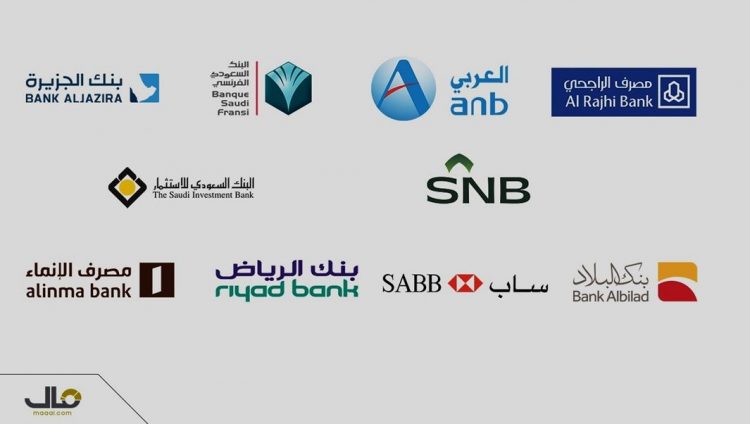Publisher: Maaal International Media Company
License: 465734
Following rising for 4 consecutive quarters, in a row
Saudi Banks’ Capital Adequacy Ratio Posted first Quarterly Decline, at the End of 2ndQ, 2021
اقرأ المزيد
The overall Saudi banks’ capital adequacy ratio reached 19.77% by the end of the second quarter of the Fiscal Year 2021, “Maaal” the Saudi Arabian leading online business daily reported.
The result is an advance of 0.87% compared to the second quarter of the last year at 18.90%.
At the same time, it fell 0.64% from the first quarter of this year at 20.41%.
The ratio of the capital adequacy recorded has decreased, on a quarterly basis, for the first time, since the first quarter of 2020.
However, it is widely expected to resume the rise on a quarterly basis, for the four consecutive quarters, to come.
Where it had scored 20.26% at the end of the fourth quarter of 2020, and 19.52% at the end of the third quarter of the same year, it posted 18.9% in the second quarter of 2020 against 18.25% in the first quarter of 2020 and 19.26% in the last quarter of 2019.
Despite this, it is still larger and more than double the Saudi Central Bank’s 8% ratio and the BCBS III Committee’s 10.5% level.
All banks had announced cash dividends for the first half of the Year 2021, with the exception of Al-Bilad Bank and The Saudi Investment Bank.
This follows the banks’ decision not to disburse earnings for the first half of the previous year, in anticipation of the world’s overall conditions.
Then, there’s the uncertainty brought on by the Coronavirus pandemic.
As a result, the Saudi banks had to boost their hedging against all risks that could arise, and their capital adequacy levels had to be raised, subsequently, to stay safe from any unfavorable changes.
The average core capital adequacy ratio of Saudi banks listed in the financial market increased to 18.01%, at the end of the second quarter of 2021, up from 17.45% in the same quarter in 2020 and the average core as well as the supporting capital adequacy ratio increased to 19.77 %, up from 18.90 % at the end of the second quarter 2020.
| Saudi Banks’ Solvency as of the 2nd Quarter of 2021 | |||
| Credit risk weighted assets (billion riyals) | 2nd Quarter 2020 | 2nd Quarter 2021 | Differ % |
| Processes risk weighted assets (billion riyals) | 1,700.2 | 2,057.5 | 21.01% |
| Market risk weighted assets (billion riyals) | 157.0 | 180.8 | 15.15% |
| The 2nd pillar of risk-weighted assets (billion riyals) | 41.0 | 47.9 | 16.68% |
| Core capital (billion riyals) | 1,898.2 | 2,286.1 | 20.43% |
| Backup capital (billion riyals) | 331.2 | 411.7 | 24.29% |
| Total core and Backup capital | 27.6 | 40.3 | 45.98% |
| Core Capital Adequacy Ratios % | 358.9 | 452.0 | 25.96% |
| Core and Backup Capital Adequacy Ratios % | 17.45% | 18.01% | 0.56% |
| Source: Saudi banks’ financial statements and “Maaal” | |||
With the exception of the Saudi British Bank “SAAB” (-5.47%), all other Saudi banks increased volume of their assets weighted for operational risks, as it increased, at the National Commercial Bank by 48% and at Al- Bilad Bank by 12.07%, followed by Al-Inma Bank by 10.88%, then Bank AlJazira by 9.92% and Riyad Bank by 9.41%.
To counter the impact of the coronavirus outbreak (Covid-19) the Saudi banks conduct stress tests scenarios on expected changes related to the oil prices, other macro-economic variables and their impact on the credit, liquidity, operations, solvency and other key performance indicators, as well as risk management practices, as well as their financial results.
On the other hand, we found that by the end of the second quarter of this year, 7 out of the 10 banks had reduced the size of their market risk-weighted assets, and 6 banks had reduced this percentage in the first quarter of 2021, while almost all of them, with the exception of the National Commercial Bank and the Arab National Bank, had increased them, by the end of the fourth quarter of 2020.
Market risks include those arising from unfavorable market price fluctuations, which would have negative impacts on the values of trading portfolio’s position, as well as exchange rate risks, which reflecting in gains and losses as well as the bank’s capital.
| Risk-Weighted Assets of Saudi Banks by the End of 2nd Quarter of 2021 | ||||||
| Credit risk weighted assets (billion riyals) | Processes risk weighted assets (billion riyals) | |||||
| 2nd Quarter 2020 | 2nd Quarter 2021 | Differ % | 2nd Quarter 2020 | 2nd Quarter 2021 | Differ % | |
| Riyad Bank | 244.21 | 258.26 | 5.75% | 17.58 | 19.18 | 9.14% |
| Bank AlJazira | 54.46 | 56.22 | 3.25% | 5.22 | 5.74 | 9.92% |
| The Saudi Investment | 74.96 | 74.45 | -0.68% | 5.06 | 5.11 | 1.01% |
| Banque Saudi Fransi | 178.21 | 178.69 | 0.27% | 12.78 | 13.00 | 1.75% |
| SAAB | 198.16 | 205.44 | 3.67% | 19.06 | 18.02 | -5.47% |
| Arab National | 148.64 | 140.29 | -5.62% | 13.74 | 14.32 | 4.27% |
| Al-Rajhi Bank | 250.01 | 334.06 | 33.62% | 30.78 | 33.32 | 8.23% |
| Al Bilad Bank | 64.17 | 76.73 | 19.57% | 6.82 | 7.65 | 12.07% |
| Alinma Bank | 115.72 | 129.25 | 11.69% | 9.64 | 10.69 | 10.88% |
| National Commercial | 371.71 | 604.08 | 62.51% | 36.30 | 53.73 | 48.01% |
| Total | 1,700.24 | 2,057.48 | 21.01% | 156.98 | 180.76 | 15.15% |
| Market risk weighted assets (billion riyals) | The 2nd pillar of risk-weighted assets (billion riyals) | |||||
| 2nd Quarter 2020 | 2nd Quarter 2021 | Differ % | 2nd Quarter 2020 | 2nd Quarter 2021 | Differ % | |
| Riyad Bank | 4.68 | 3.07 | -34.35% | 266.46 | 280.52 | 5.27% |
| Bank AlJazira | 1.51 | 1.43 | -5.14% | 61.18 | 63.39 | 3.61% |
| The Saudi Investment | 0.84 | 0.25 | -70.84% | 80.87 | 79.81 | -1.31% |
| Banque Saudi Fransi | 3.53 | 3.47 | -1.69% | 194.51 | 195.16 | 0.33% |
| SAAB | 2.08 | 1.64 | -21.51% | 219.31 | 225.10 | 2.64% |
| Arab National | 1.36 | 2.39 | 75.89% | 163.73 | 157.00 | -4.11% |
| Al-Rajhi Bank | 8.45 | 3.45 | -59.19% | 289.24 | 370.83 | 28.21% |
| Al Bilad Bank | 0.86 | 1.05 | 22.52% | 71.85 | 85.43 | 18.90% |
| Alinma Bank | 5.25 | 3.57 | -31.88% | 130.61 | 143.51 | 9.88% |
| National Commercial | 12.46 | 27.54 | 121.00% | 420.47 | 685.34 | 62.99% |
| Total | 41.02 | 47.86 | 16.68% | 1,898.25 | 2,286.10 | 20.43% |
| Source: Saudi banks’ financial statements by the end of the 2nd quarter of 2021 | ||||||
To cover the risks inherent in their operation, banks conduct active capital base management.
Processings are used to keep track of capital adequacy.
Among them are the BCBS Committee on Banking Supervision’s regulations and ratios, which the Saudi Central Bank strictly observes and applies, in this regard.
These rates assess capital sufficiency by comparing eligible capital to assets, reported in the statements of financial position, commitments and contingent obligations, and the nominal quantities of derivatives, all of which are weighted to demonstrate the relative credit risk, market risk and processes risk.
Since 1988, the BCBS Committee for the Supervision of Banks has set the first rules and criteria for calculating capital adequacy ratio of banks, which it set at the time at 8%.
That is as a global standard for measuring the solvency or insolvency of debts.
Whereas BCBS I, focuses on credit risk only, BCBS II, includes market and operational risk. Meanwhile, BCBS III, focuses on the quality, consistency and transparency of the financial base of banks.








